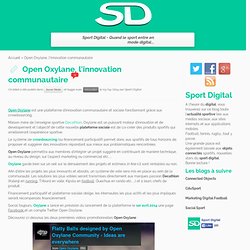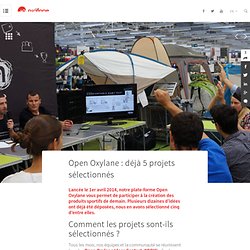

Damien Goffaux
The Web Is Dead. Long Live the Internet. Two decades after its birth, the World Wide Web is in decline, as simpler, sleeker services — think apps — are less about the searching and more about the getting.

Chris Anderson explains how this new paradigm reflects the inevitable course of capitalism. And Michael Wolff explains why the new breed of media titan is forsaking the Web for more promising (and profitable) pastures. Who’s to Blame: Us As much as we love the open, unfettered Web, we’re abandoning it for simpler, sleeker services that just work. by Chris Anderson You wake up and check your email on your bedside iPad — that’s one app. You’ve spent the day on the Internet — but not on the Web. This is not a trivial distinction. A decade ago, the ascent of the Web browser as the center of the computing world appeared inevitable. But there has always been an alternative path, one that saw the Web as a worthy tool but not the whole toolkit. “Sure, we’ll always have Web pages. Who’s to Blame: Them Chaos isn’t a business model.
Infographic: Understanding the Sharing Economy. The Sharing Economy, Explained [Infographic] The sharing economy is in right now, with successes like Airbnb and Uber propelling the industry forward.
![The Sharing Economy, Explained [Infographic]](http://cdn.pearltrees.com/s/pic/th/sharing-explained-infographic-93199312)
While the sharing economy has its roots in peer-to-peer platforms Craigslist and eBay, the industry really took off in the aftermath of the 2008 financial crisis. Many people were made redundant, which both helped to free up their entrepreneurial juices, and also made them more conscious of their spending. Instead of purchasing new goods, sharing and renting used ones from their peers became a much more appealing proposition. At the same time, internet users had become comfortable with the prospect of not only online shopping, but purchasing items from other netizens. Trust mechanisms like ratings systems became widespread, and more advanced online payment systems enabled customers to back out of deals that went sour. E-réputation et marques : état de l'art et enjeux - by Vanksen. Open Oxylane, l'innovation communautaire. Open Oxylane est une plateforme d'innovation communautaire et sociale fonctionnant grâce aux crowdsourcing.

Maison mère de l'enseigne sportive Decathlon, Oxylane est un puissant moteur d'innovation et de developement et l'objectif de cette nouvelle plateforme sociale est de co-créer des produits sportifs qui amélioreront l'expérience sportive. Le système de crowdsourcing (ou financement participatif) permet donc aux sportifs de tous horizons de proposer et suggérer des innovations répondant aux mieux aux problématiques rencontrées. Open Oxylane permettra aux membres d'intégrer un projet suggéré en contribuant de manière technique, au niveau du design, sur l'aspect marketing ou commercial etc… Oxylane garde bien sur un oeil sur le déroulement des projets et estimera in fine s'il sont rentables ou non. Afin d'élire les projets les plus innovants et aboutis, un système de vote sera mis en place au sein de la communauté.
Edit Source: Les impatients du sport Romain Articles recommandés. Open Oxylane : déjà 5 projets sélectionnés. Le « siège vélo poussette », par Fabien Sélectionné lors du premier #OOIC, ce projet est le premier à voir le jour sur Open Oxylane.

Fabien avait imaginé une solution astucieuse pour utiliser sa poussette en tant que siège bébé. Il sera maintenant accompagné par nos équipes d’ingénieurs et de designers pour concrétiser son idée en un véritable produit. Le siège bébé « confortable », par Malick On reste dans le même domaine avec cette idée proposée par Malick. Le « Nipple protector », par Yuvgokul Pendant la pratique de certains sports, le frottement du tee-shirt peut occasionner des irritations.
La « Quechua hiking community app », par Alex En montagne, beaucoup de randonneurs suivent les mêmes parcours. La tente « Inside Panorama », par Amy « Voir sans être vu » : c’est le défi qu’Amy souhaite relever en nous proposant cette idée.
Outils veille. Trends retail.